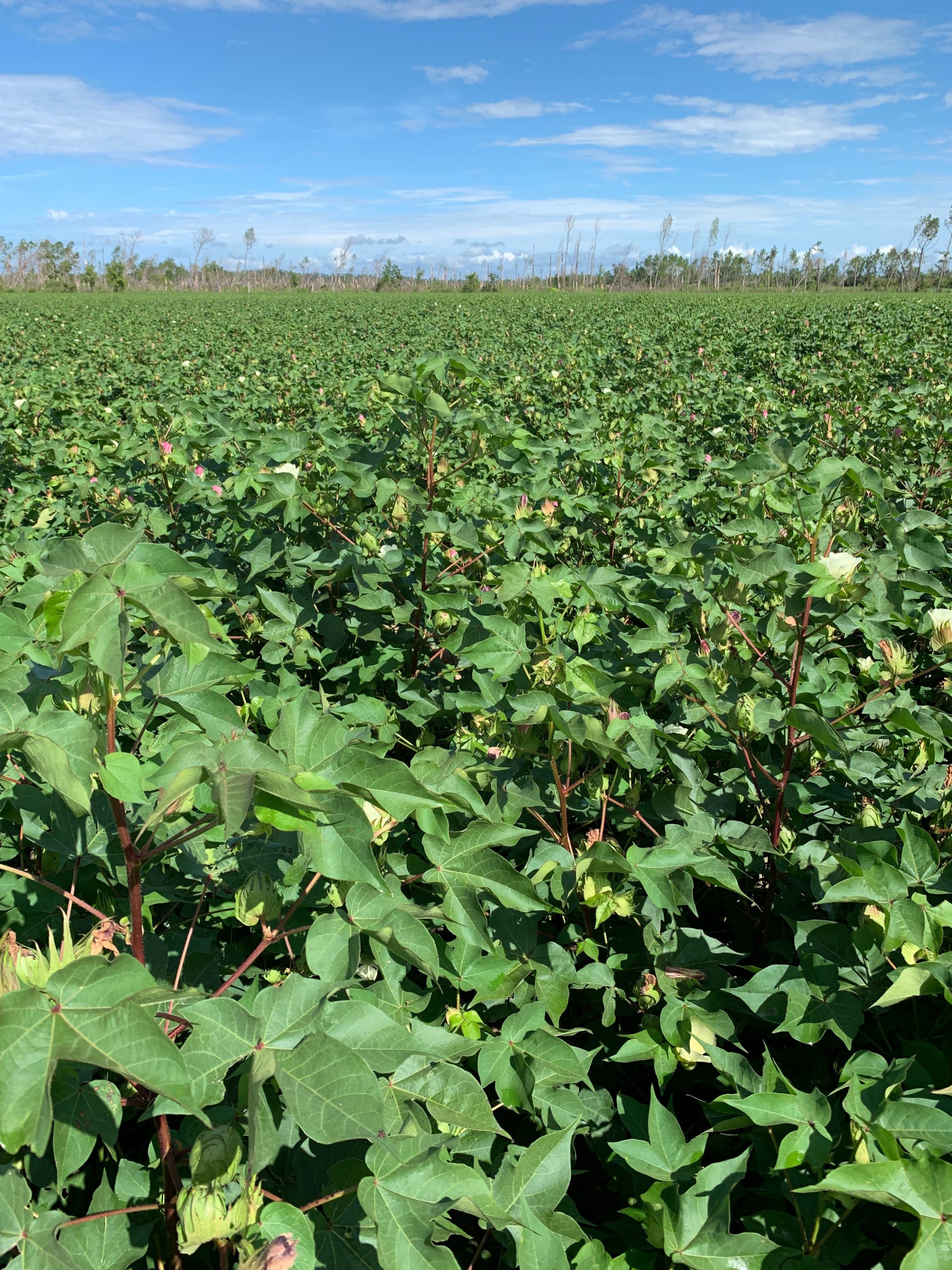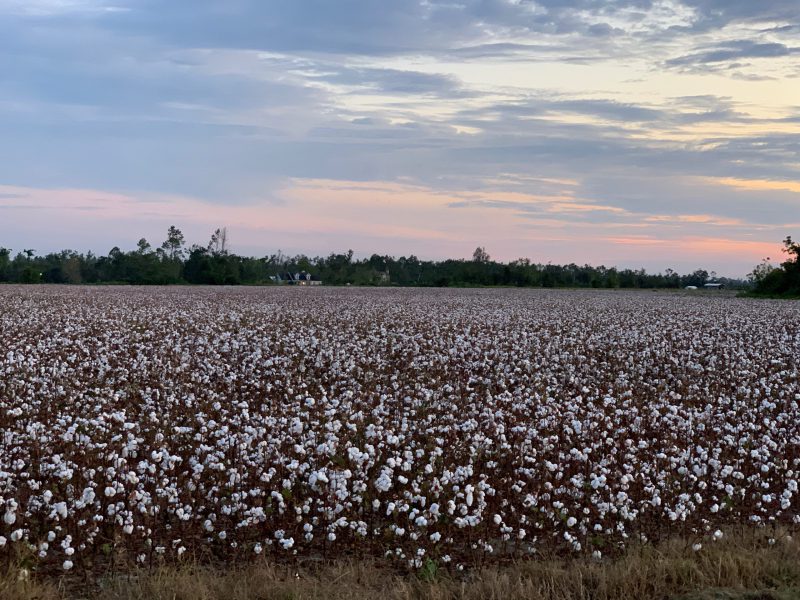When one thinks of the Florida Panhandle, I’m guessing cotton isn’t the first thing that comes to mind, but maybe it should be! With over 100,000 acres in cultivation annually (2017 USDA Census of Agriculture), a crop worth $52.5 million, cotton dominates cultivated acres in the region. As the growing season winds down and farmers get ready for fall’s harvest, let’s take a moment to appreciate the cotton plant, its history and place in our local agricultural industry, and discuss the reasons why growing cotton has a bright future in the Panhandle.
Though it enjoys status as the largest acreage crop in Northwest Florida today, cotton hasn’t always been a major component of the row crop rotation here. The species was widely grown in the Florida Panhandle in the 1800s and early 1900s, but fell out of favor during the middle of the 20th century as production costs skyrocketed, primarily due to the devastating impacts from the Cotton Boll Weevil. In the heyday of the Boll Weevil’s impact, cotton farmers were spraying insecticides up to 15 times per season to curtail the pest’s damage (severely eating into already slim commodity margins) and making the crop unprofitable to produce. At the low point, only a couple of thousand acres of cotton were being grown in the entire state! Thankfully, through an astonishingly successful eradication effort in the 1980s by USDA and cotton producers, the boll weevil has become a pest of the past, and cotton has become less input intensive and more sustainable options for crop rotations in the U.S.
Cotton is widely considered the most sustainable row crop currently in cultivation in the Panhandle. Talk to a local cotton farmer and they’ll be quick to point out the advantages cotton has over other species. As it is native in subtropical climates like ours around the world (varieties of cotton are known to occur naturally in areas of Asia, Africa and the Americas), cotton has found an easy home here. Because it appreciates our ample rainfall, tolerates extended drought and excels during extreme summer heat, cotton has a built-in competitive advantage over almost any other potential crop a grower could produce. Also, since the eradication of the boll weevil and the introduction of modern transgenic cotton (genetically modified), chemical pesticide inputs necessary for production have decreased dramatically. New transgenic cotton varieties are “bred” to express a microbial protein from the bacterium Bacillus thuringiensis (Bt), a naturally occurring bacteria that kills caterpillar pests (the current primary insect pests of cotton). The inclusion of this gene into cotton plants, and the eradication of the boll weevil have allowed farmers to reduce chemical pesticide use by up to 90% and increase yields dramatically. For those who view genetically modified crops in a negative light, consider the amazing ecological and economic impact these crops offer by decreasing chemical pesticide use!
–
In conversations with area farmers, you’ll find that most express optimism about the future of the cotton industry. As technology continues to allow farmers to realize better yields with less inputs, pockets of productive land formerly occupied by timber pre-Hurricane Michael come back into cultivation, tariffs/trade tensions with China hopefully ease, and economic conditions at home continue to regain strength, causing prices to rebound, cotton should continue to play a major role in Panhandle agriculture. The next time you drive past a field of “southern snow” over the next several weeks, remember the decades of science and hard work that have gone into ensuring this sustainable crop can continue to provide so many products to use in our daily lives, while supporting our local, national and global economy. Thank a cotton farmer today!
- Stay Ahead of Peanut Fungal Pathogens This Summer - August 8, 2025
- Panhandle Cotton Acres Are Down in 2025– Here’s the Reason - July 11, 2025
- It Snowed, But Has This Been a Historically Cold Winter? What the Data Says. - January 31, 2025


